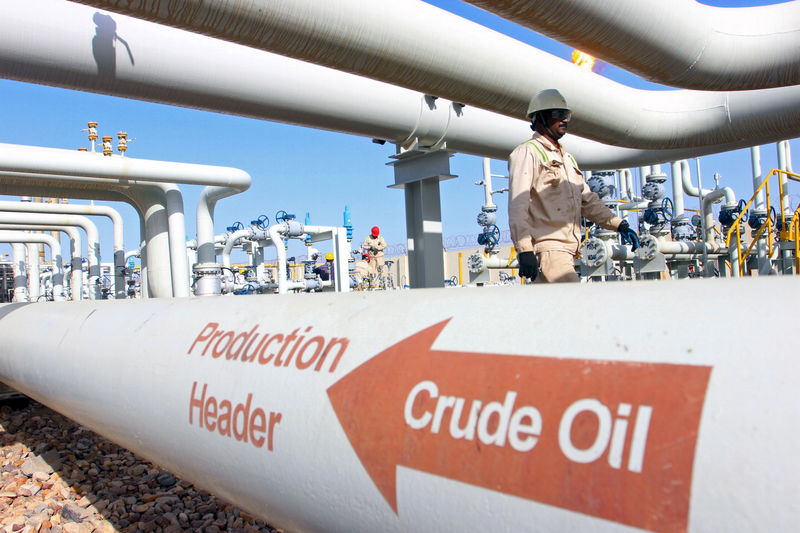Novo Nordisk, Eli Lilly fall after Trump comments on weight loss drug pricing
By Peter Nurse
Investing.com -- Oil prices rose Friday, helped by reduced expectations of additional supply from Saudi Arabia, although recession fears still weigh heavily.
By 08:55 AM ET (1255 GMT), U.S. crude futures traded 2.5% higher at $98.20 a barrel, while the Brent contract rose 2.6% to $101.69.
U.S. Gasoline RBOB Futures were up 2.3% at $3.2593 a gallon.
U.S. President Joe Biden is visiting Saudi Arabia Friday to attend a summit of Gulf allies with the express purpose of persuading the main players in the region to produce more oil and thus reduce prices.
He may well have his work cut out though, after Reuters cited a U.S. official as saying an immediate Saudi oil output boost is not expected.
This comes at a time when the members of the Organization of the Petroleum Exporting Countries are struggling to comply with their agreed production levels, never mind adding to them, given a lack of infrastructure spending.
That said, he could get some help from Libya after the new head of the country’s National Oil Corp, Farhat bin Qadara, vowed to end a blockade following a power struggle between rival governments and double crude production to 1.2 million barrels a day.
The market has seen a recent drop in prices, with both benchmarks down over 5% over the course of the week, having the chance of ending below $100 a barrel for the first time since early April.
These losses were down primarily to fears that aggressive monetary tightening by a series of central banks, and the Federal Reserve, in particular, will lead to a global recession.
Data out earlier Friday indicated that China’s economy contracted in the second quarter, by more than expected, leaving annual growth at just 0.4% - its slowest since the start of the pandemic. The numbers led Goldman Sachs analysts to cut their Chinese growth forecast for the year again, to only 3.3%.
Data released earlier in the week showed China’s daily crude oil imports in June sank to their lowest since July 2018.
China is the largest importer of crude, and as the second largest economy in the world, it is a major growth driver in the Asia region.
Adding to the recent weak sentiment in the crude market has been the strength of the U.S. dollar, which is currently near its strongest level in two decades. A stronger U.S. currency usually weighs on oil because it makes the dollar-priced commodity more expensive for holders of other currencies.
The number of U.S. oil rigs, collated by Baker Hughes, and CFTC positioning data conclude the week, as usual.
